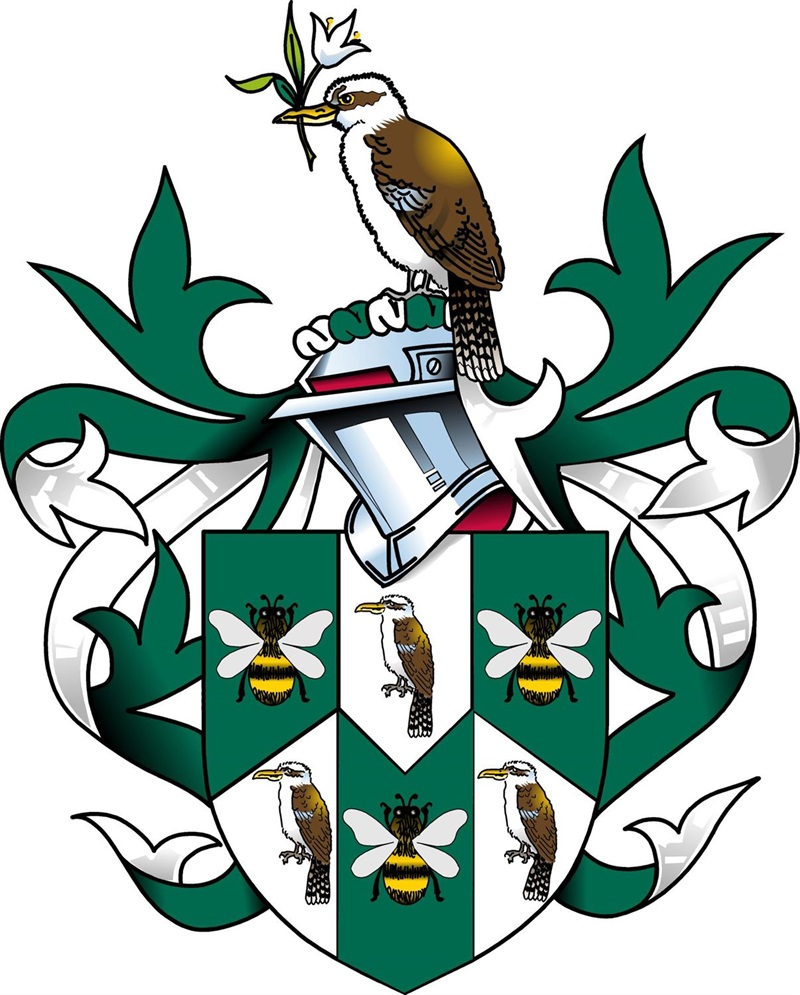Maroondah Coat of Arms

The Garter Principal King of Arms, London, granted the City of Maroondah its Coat of Arms on 6 April 1999
The Coat of Arms reflects the historical links and common origins of the areas now incorporated within Maroondah.
Ringwood and Croydon have a common origin in that they originally formed part of the Shire of Lilydale – the area which formed the Borough of Ringwood severing ties in 1924 and the Shire of Croydon being created in May 1961.
Therefore, in choosing emblems to appear on Maroondah’s Coat of Arms, care was taken to include symbols, which had meaning to residents of both the former Cities of Ringwood and Croydon.
The lily in the beak of the kookaburra perched on the helmet above the shield signifies the severance of these areas from the Shire of Lilydale.
The quarters on the shield are green and white: green for the beauty of the trees of which Maroondah is justifiably proud, white to perpetuate the early name “White Flats”, coined by pioneering settlers on observing the many white flowering plants which covered much of the area.
Both former Cities had an orchard/farming background, hence the bees representing industriousness and agriculture, incorporated in the shield.
Croydon adopted the Cornish Chough (which resembled a bird which inhabited Croydon, Victoria, in the early days) as part of its Coat of Arms to demonstrate its affinity with Croydon, England. For the same reason, the Borough of Ringwood depicted kookaburras on its Crest as they were considered to be similar to the blackbirds, which appear on the Crest of Ringwood, England.
Maroondah has perpetuated the use of the kookaburra in its Coat of Arms, placing it in the same position in which the Chough appeared in the Croydon Coat of Arms. The kookaburra is perched upon what is called the “fountain” in heraldic terms and is a knight’s helmet from a suit of armour and is generic to almost all Coat of Arms. It provides a link to the very embryonic root of Coat of Arms when they served to identify medieval knights (from friend or foe) within the heat of battle. Various meanings are ascribed to the view of the helmet either front or side on and to whether the visor is open or closed. Maroondah’s is designed as a Coat of Arms for a company.